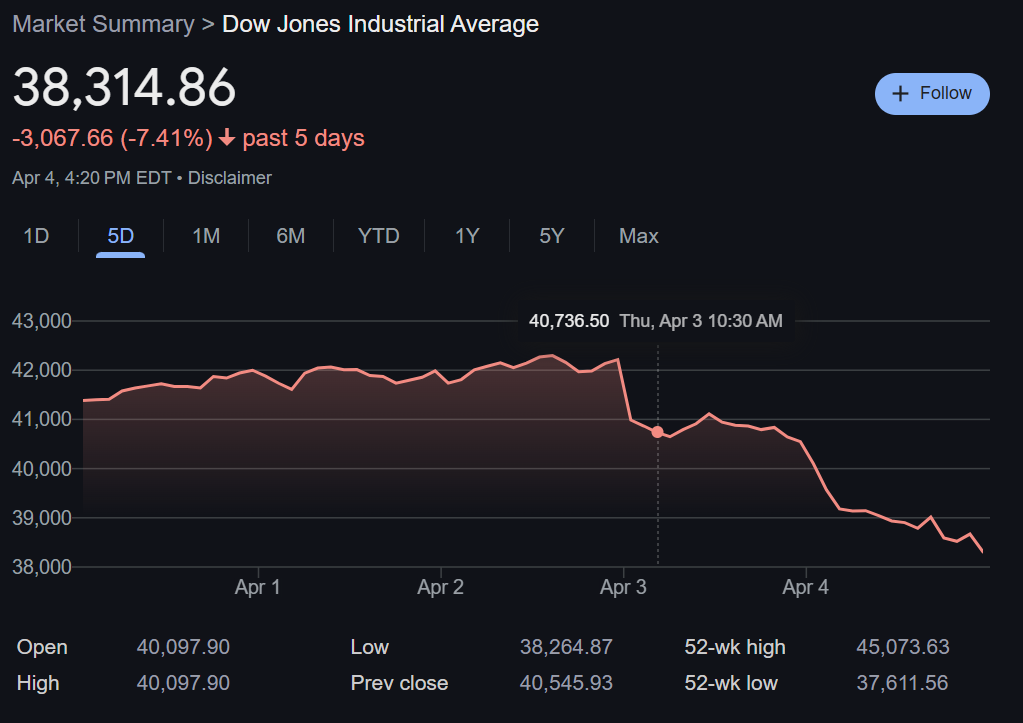
April 4, 2025, turned out to be a day of monumental jitters on Wall Street, as traders watched the Dow Jones Industrial Average nosedive over 2,200 points, a colossal drop that leaves a 5.5% gaping wound. The S&P 500 and Nasdaq weren’t left unscathed either, each shedding nearly 6% in value. The trigger for this financial turbulence? A geopolitical spat managed to get personal, with China rolling out some rather bruising tariffs on U.S. imports, sending the delicate fabric of global markets into a frenzy of tailspins and freefalls.
While traders may have spent sleepless nights re-evaluating their caffeine levels and crisis management skills, another community found itself in a parallel predicament—trading card collectors and investors. These individuals have been on something of a hot streak the past few years, seeing card values hit what can only be described as stratospheric heights. What started as a nostalgia-driven hobby zoomed into a glorified investment frenzy, characterized by eye-popping sales, notably card values for baseball icons like Shohei Ohtani, Aaron Judge, and Mike Trout. Trading cards evolved from shoebox relics into high-stakes poker chips in an economic game of chance, catching the eye of amateurs and aficionados alike.
But, as with all things resting atop sky-high cliffs, the precariousness of this climb means a few wrong steps—or, in this case, a mani-pedi of macro-economic proportions—could lead to a treacherous slide. Today’s stock market chaos sends ripples across the trading card sector, prodding collectors to pause and consider the impacts of shrinking consumer confidence on their beloved investments. When the economic seas grow choppy, discretionary spending contracts like a scared turtle, potentially bumbling demand for high-end collectibles and nudging prices toward correction territory. In essence, the current market mania could dial down into a frugal fugue.
Conversely, let’s not count the trading cards out just yet. The bittersweet symphony of market instability often cues investors to scramble for alternative assets—doilies they can wrap around their portfolios to mollify risks. Here, tangible assets like trading cards surface as a knight in shiny laminated armor, whispering tales of past escapes from the doldrums of economic downturns. Of course, this does not mean a wholesale sprint towards the mint condition crown jewels, but both collectors and hedge-seeking investors might see rare, limited-edition, or graded cards as the financial Grail quest worth embarking upon.
While these little rectangles of cardstock enjoy their moment in the sun, attention might shift towards monitoring a flurry of variables—the galloping economic developments, wavering consumer confidence scales, and, of course, the omnipresent market mood swings. All these will influence the oscillating fortunes of the trading card market, demanding that both the novice and the old card-hand remain on their toes, fingers tapping their temples in thoughtful consideration of upcoming strategies. Whether the recent Wall Street nosedive turns out to be a pothole on the expressway to prosperity or the first scene in a disaster flick will be the deciding factor in the market’s health prognosis in the coming months.
For Wall Street, the Ativan may have to flow thick and fast as the market seeks equilibrium after the tumble. However, amidst this turmoil, the trading card community may find itself presented with a mixed bag of challenges and opportunities, both daunting and irresistible. Through the dust and the anticipation of the ride ahead, there is a chance for the keen-eyed and the strategy-savvy—the prospect of bargains to be had and treasures unearthed in this period of volatility.
In a world where such miniature culture-bearers like trading cards can suddenly become headline grabbers, it’s a moment like any other, but also unique in its promise and peril—a time to reframe perspectives, sharpen instincts, and prepare for what’s next in this intriguing game of economic cards.
